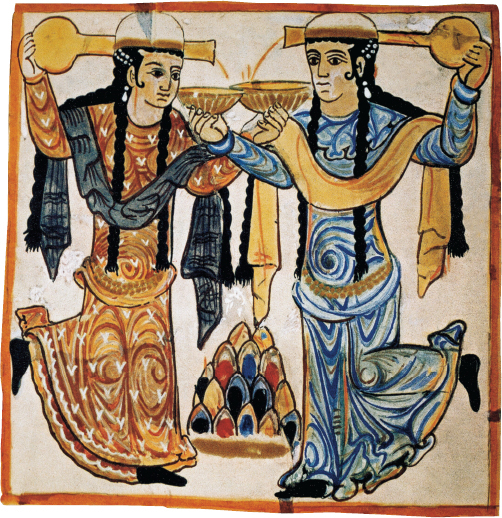Slavery
Slavery had long existed in the ancient Middle East, and Muslim expansion ensured a steady flow of slaves captured in war. Moreover, the Qur’an accepted slavery much the way the Old and New Testaments did. But the Qur’an prescribes just and humane treatment of slaves, explicitly encourages the freeing of slaves, and urges owners whose slaves ask for their freedom to give them the opportunity to buy it.

Women slaves worked as cooks, cleaners, laundresses, and nursemaids. A few performed as singers, musicians, dancers, and reciters of poetry. Many female slaves also served as concubines. Not only rulers but also high officials and rich merchants owned many concubines. Down the economic ladder, artisans and tradesmen often had a few concubines who assumed domestic as well as sexual duties.
According to tradition, the seclusion of women in a harem protected their virtue (see “Women in Classical Islamic Society”), and when men had the means the harem was secured by eunuch (castrated) guards. Muslims also employed eunuchs as secretaries, tutors, and commercial agents, possibly because eunuchs were said to be more manageable and dependable than men with ordinary desires. Male slaves, eunuchs or not, were also set to work as longshoremen on the docks, as oarsmen on ships, in construction crews, in workshops, and in gold and silver mines. Male slaves also fought as soldiers.
Slavery in the Islamic world differed in at least two fundamental ways from the slavery later practiced in the Americas. First, race had no particular connection to slavery among Muslims, who were as ready to take slaves from Europe as from Africa. Second, slavery in the Islamic world was not the basis for plantation agriculture, as it was in the southern United States, the Caribbean, and Brazil in the eighteenth and nineteenth centuries.
Slavery was rarely hereditary in the Muslim world. Most slaves who were taken from non-